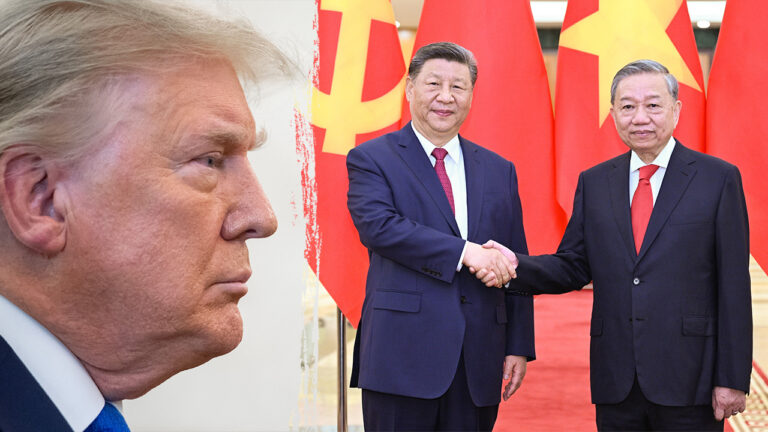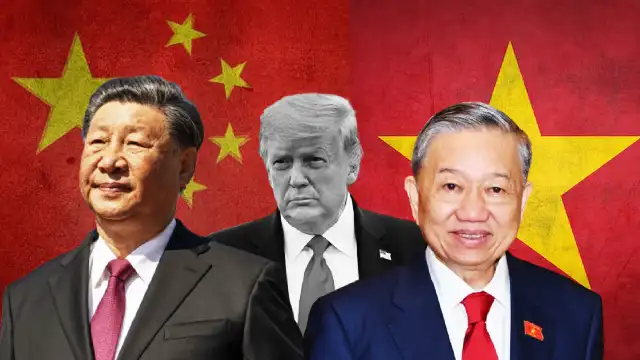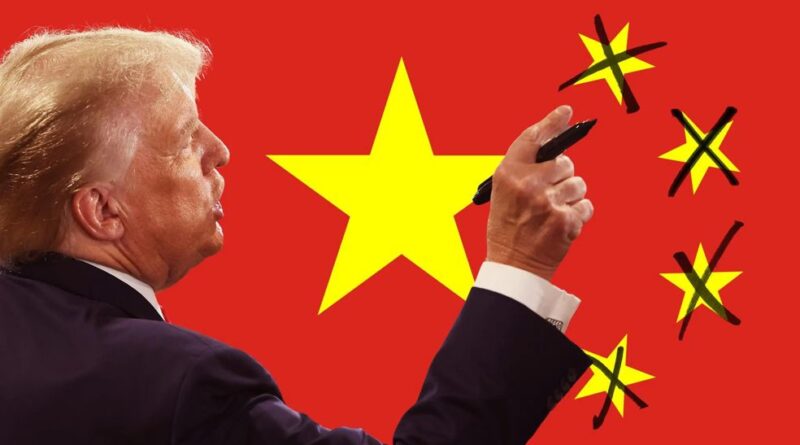Is Trump pushing Vietnam into China’s arms?
Le Hong Hiep
No, Vietnam will likely adapt to Trump 2.0 while preserving its multifaceted partnerships.
On April 2, 2025, President Donald Trump imposed a 46 percent reciprocal tariff on Vietnam’s exports to the United States, effective April 9. While now suspended, this steep duty, one of the highest in Trump’s tariff regime, threatens to cause extensive damage to Vietnam’s export-driven economy unless averted by a trade agreement. While this economic pressure might suggest a pivot toward China, Vietnam’s strategic instincts and historical context indicate a more nuanced response: Hanoi will nonetheless strive to maintain balance between Washington and Beijing rather than quickly leaning towards its northern neighbor.

Vietnam’s foreign policy has long been defined by a careful balancing act, cultivating robust ties with both the U.S. and China, alongside powers like Russia, Japan, India, and the European Union. This diversified approach prioritizes autonomy and resilience, avoiding over-dependence on any single nation. Tilting heavily toward China at the expense of the U.S. would jeopardize this strategy, particularly given Vietnam’s fraught history with Beijing. Different efforts by Vietnam, including committing to buy more American products, facilitating U.S. investment, cutting tariffs on various American goods, and top leaders reaching out to Trump diplomatically, reflect Hanoi’s commitment to sustaining ties with the U.S.
Deep-seated mistrust of China, especially over the South China Sea, further anchors Vietnam’s reluctance to drift into China’s orbit. China’s expansive claims and militarization of this vital waterway directly challenge Vietnam’s sovereignty and maritime interests, with tensions flaring over fishing rights and oil exploration. Hanoi relies on U.S. military and diplomatic support to counterbalance Beijing’s assertiveness. Trump’s transactional tariff stance frustrates Vietnam, but the strategic imperative of U.S. backing outweighs immediate economic pain. Losing this counterweight would embolden China, a risk Vietnam is unwilling to take despite the sting of a 46 percent tariff rate.

As such, in the short to medium term, Vietnam is unlikely to lean decisively toward China. Instead, Hanoi will double down on diplomacy, as seen in General Secretary To Lam’s phone call with President Trump on April 4, in which he showed a willingness to eliminate tariffs on American products. Vietnam will also address Trump’s concerns—particularly trade deficits and Chinese transshipment—by tightening origin controls and boosting U.S. imports. This pragmatic approach aims to reduce the tariff and preserve ties with the United States.
However, if the tariff persists and cripples Vietnam’s economic growth, Hanoi may attempt to lessen its trade reliance with the United States, while deepening economic links with China and other partners. This shift, while pragmatic, would erode Vietnam’s balanced foreign policy and autonomy, inadvertently strengthening China’s regional hand.
In sum, facing Trump’s tariff gambit, Vietnam’s preference remains clear: negotiate with Washington while not leaning decisively toward Beijing. Yet, sustained tariffs could force a recalibration, potentially nudging Hanoi toward Beijing, especially in the economic domain. This will weaken U.S. strategic leverage in the Asia-Pacific and hurt its paramount goal of containing China’s rise. (carnegieendowment.org)
Le Hong Hiep
Senior Fellow and Coordinator, Vietnam Studies Program
ISEAS – Yusof Ishak Institute



